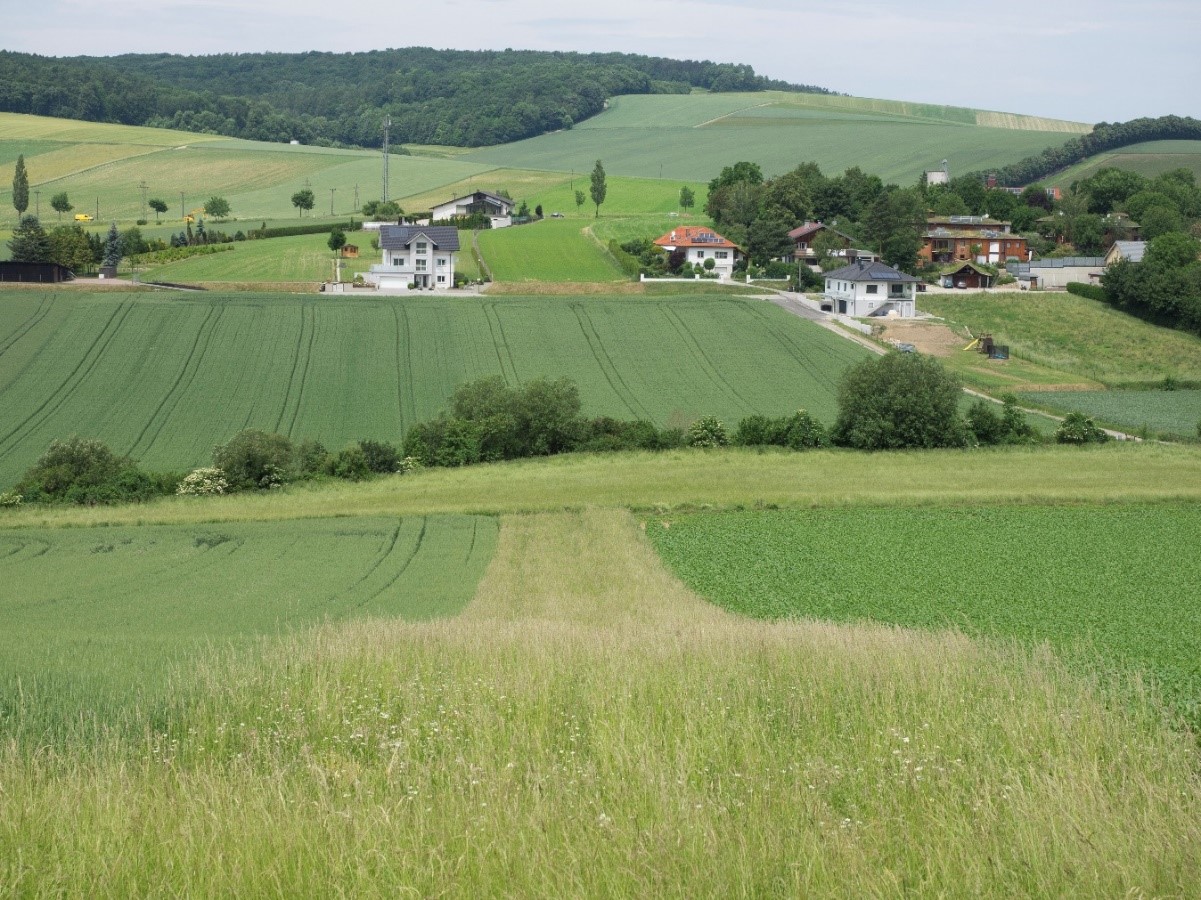Background information from previous studies 2017-19
In the three-year REGRASS project, the contribution of newly created ecological compensation areas to promoting the biodiversity of beneficial organisms and ecosystem services in the agricultural landscape was examined. For this purpose, flower-rich meadows (in the form of 10 m wide strips of grassland) were created in the middle of agricultural fields and cultivated as meadows by contract farmers. The current project phase covers the early history of colonization of newly created meadows by beneficial insects. The biodiversity and abundance of spiders, ground beetles and ants, which make important contributions to reducing pests, as well as important pollinators such as wild bees, honey bees, bumblebees and hoverflies were examined. In addition, studies were carried out on butterflies, grasshoppers, cicadas, bugs and small game. In parallel to the organismic surveys, experiments were carried out on the effectiveness of ecosystem services such as biological pest control and pollination. At the same time, the development of plant growth was observed by experts from the HBLFA Raumberg-Gumpenstein. Animals, plants and ecosystem services were examined in the newly created meadows, old established Vienna Wood meadows and in adjacent winter cereals. In addition, animal numbers were compared between new and old meadows and so-called biodiversity areas (subsidized ÖPUL areas). The uniqueness of the REGRASS project lies in the parallel, controlled experimental investigation of many groups of organisms and ecosystem services. The results of the project provide information about the initial settlement speed and thus about the effectiveness of newly created meadows as ecological compensation areas. The previous field investigations took place from 2017-19 in the area of the Vienna Woods community of Sieghartskirchen and describe the initial period of development. The project will now be continued in a long-term study from 2021 to 2023 in collaboration between scientists from the University of Natural Resources and Life Sciences, the University of Vienna and the HBLFA Raumberg-Gumpenstein with local farmers.
Results 2017-19
With the help of a regionally adapted seed mixture, species-rich, extensive meadow strips could be established on all test areas, which in the third year of the survey had an average of 25 species of flowering plants from 10 different plant families (Photo 1). Previous results show that pollinating insects very quickly accept these newly created meadows as feeding habitat and fly in from the surrounding landscape. In some cases, very high numbers of individuals and species were observed in the newly created meadows. Figure 1 shows these high numbers of pollinating insects in the new meadows compared to the old meadows and the ÖPUL areas. The results show that in order to promote a wide range of flower pollinators, the presence of a correspondingly wide range of flowering plants from different plant families is also necessary.
Compared to pollinators, colonization by predatory insects occurred much more slowly. Although the number of species and individuals increased quickly in these groups, even after three years the species community of spiders, ground beetles and ants is still essentially that of a field. Although species-specific differences can be identified, the newly created meadows have so far hardly acted as a compensatory area for predatory insects in the sense that species have migrated from the new meadows into the adjacent grain. However, the spiders showed a promising change in distribution within the three years. While the species communities in the new meadows were very similar to those in the grain in the first year, in years 2 and 3 they developed away from the grain towards the old meadows, indicating an exchange of species between old and new meadows (Figure 2). Based on the very high number of individuals in the newly created meadows,
Outlook on the REGRASS II project, 2021-23
How long the process of colonization by meadow species takes and from when a compensation area effectively functions as a new habitat is hardly known. It is also not known at what point such compensation areas have a measurable effect on ecosystem services. This study is a comprehensive test of the ecological restoration potential of agricultural landscapes. When carried out over a longer period of time, the results can provide information about how quickly and sustainably biodiversity can be stabilized or increased in an agricultural landscape. The results of the project will also provide data on the dispersal potential and speed of insects, allowing conclusions to be drawn about their ability to adapt to climate change. Clarifying the above-mentioned topics will make a significant contribution to the future design of agri-environmental measures and can provide a sound basis for argumentation for future ÖPUL measures and their optimal duration!
graphic
Figure 1. Number of individuals of wild bees (left), bumblebees (middle) and hoverflies (right) in old meadows (OG), newly created meadows (NG) and ÖPUL areas (SG). Different letters indicate significant differences between habitat types.
Figure 2. Similarity of spider species communities in old meadows (OG=yellow), newly created meadows (NG=green), winter cereals near (CN=blue) and far (CF=red) from NG in the years 2017-2019.Project partner
Project partners
University Prof. Mag. Dr. Thomas Frank
Institute of Zoology, University of Natural Resources and Life Sciences Vienna
Dr. Dietmar Moser
Department of Botany and Biodiversity Research, University of Vienna
team







